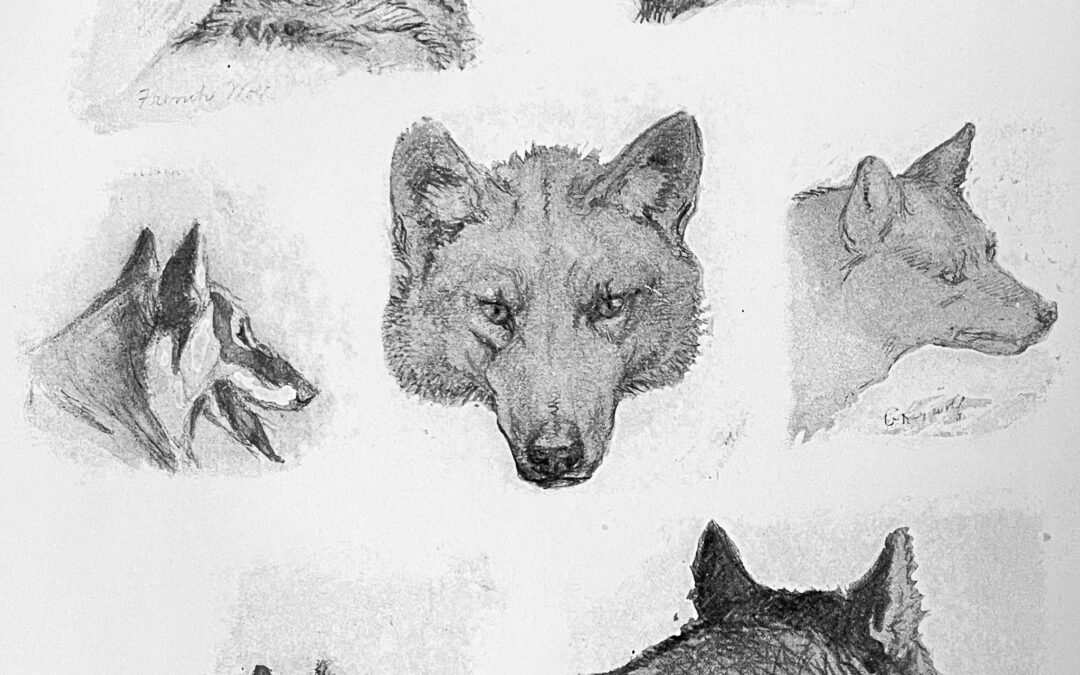Life Studies of Wolves by Ernest Thompson Seton
This is one in an ongoing series of nature essays and artwork from Lives of Game Animals (1925-1928) by Ernest Thompson Seton. Seton’s analysis of Gray Wolf behavior was groundbreaking at the time. Since he devoted a large section of his Lives to Wolves, I am presenting his work over several blog postings. Wolf society practices have fascinated humans for thousands of years. There is always something more to learn such as this recent account of pup raising.
As an aside, Seton found a wolf den on the shores the Arctic Aylmer Lake in 1907. He found the bones of past wolf meals, although none were recent. I revisited the site in 2015 but the bones had long since vanished and no wolves had used the site in a very long time. Wolf populations in that area have declined along with the catastrophic collapse of caribou populations.
ENEMIES OF THE YOUNG/Vol I Pg. 278
“At this time the only enemies that the young Wolves have to fear are eagles, man, insects, and disease. Eagles very often pick up the youngsters as they play around the den door; man destroys the mother, and digs out the pups if he can locate the den; parasites, insects, and disease also are to be dreaded, but of course , winter famine is their direst scourge.
Hearne makes some remarks which show the Northern Indians and the Wolves on a very friendly footing.
The Wolves, he says, ‘always burrow underground to bring forth their young; and though it is natural to suppose them very fierce at those times, yet I have frequently seen the Indians go to their dens and take out the young ones and play with them. I never knew a Northern Indian hurt one of them; on the contrary, they always put them carefully into the den again; and I have sometimes seen them paint the faces of the young Wolves with vermilion or red ochre.’
In August the young are so far grown that they begin to follow the mother about in her hunting expeditions, and the den is abandoned. By this time the doorway is littered with the bones, fur, and feathers of the game brought home by the parents.”
EDUCATION OF THE YOUNG/Vol I Pg. 279
“The education of the cubs now begins in earnest. The chief means is example. Whether consciously or not, on the part of the teacher or of the class, there can be no doubt that it is by seeing the mother do, or not do, that the little ones learn much that is necessary to their success in life. Thus she inspires them with terror of a trap by showing her own terror of it; no matter whether conscious or unconscious, this is teaching. The same is true, I suppose, of all the ideas that modern Wolves have; that is, the ideas so recent that they have not yet had time to become ingrained as instinct.”

